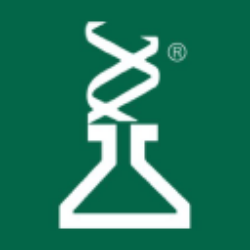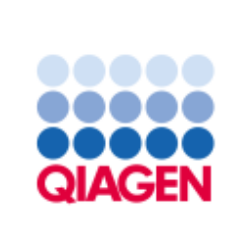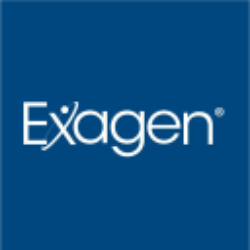NEOG

Neogen Corporation
NEOG
(1.8)12,39 USD
-1.01% ROA
-0.75% ROE
-337.76x PER
3.183.293.620,00 USD
28.5% DER
0% Yield
-2.58% NPM
Neogen Corporation Stock Analysis
Neogen Corporation Fundamental Analysis
Fundamental analysis in stock investing is like studying the foundation of a house before buying it. It involves looking at a company's financial health, like its earnings, assets, and debts, to determine if it's a good investment based on its fundamental strength and potential for growth.
| # | Analysis | Rating |
|---|---|---|
| 1 |
Assets Growth
With continuous growth in revenue over the last five years, this company has proven to be a lucrative investment option, showcasing its strong financial performance. |
|
| 2 |
DER
The stock has a minimal amount of debt (28%) relative to its ownership, showcasing a strong financial position and lower risk for investors. |
|
| 3 |
Revenue Growth
Over the past five years, this company's revenue has consistently increased, demonstrating a robust financial performance that makes it an appealing opportunity. |
|
| 4 |
PBV
The stock's PBV ratio (1.11x) indicates a justifiable valuation, presenting a compelling choice for investors seeking reasonable returns. |
|
| 5 |
Net Profit Growth
This company's net profit has remained stagnant over the past five years, indicating a lack of growth and making it a less favorable investment option. |
|
| 6 |
Graham Number
The company's Graham number indicates that it is overvalued compared to its stock price, suggesting a potentially unfavorable investment opportunity. |
|
| 7 |
Dividend Growth
The company's dividend growth has been flat for the past three years, raising concerns for potential investors seeking reliable returns. |
|
| 8 |
Dividend
Investors should note the absence of dividends from the company in the last three years, indicating potential financial challenges. |
|
| 9 |
Buffet Intrinsic Value
The company's stock presents a potential concern as it appears overvalued (-183) by Warren Buffett's formula, indicating that its market price exceeds its estimated intrinsic value. |
|
| 10 |
ROE
The stock's ROE indicates a negative return (-0.85%) on shareholders' equity, suggesting poor financial performance. |
|
| 11 |
ROA
The stock's ROA (-3.18%) indicates that it's not effectively utilizing its assets to generate profits, making it a less favorable option to invest and earn consistent returns. |
Neogen Corporation Technical Analysis
Technical analysis in stock investing is like reading the patterns on a weather map to predict future weather conditions. It involves studying past stock price movements and trading volumes to make predictions about where a stock's price might go next, without necessarily looking at the company's financial health.
| # | Analysis | Recommendation |
|---|---|---|
| 1 | Awesome Oscillator | Buy |
| 2 | MACD | Buy |
| 3 | RSI | Sell |
| 4 | Stoch RSI | Sell |
Neogen Corporation Price Chart
Financial Statements
Financial statements are like report cards for companies. They show how much money a company makes (income statement), what it owns and owes (balance sheet), and where it spends its money (cash flow statement), helping stock investors understand if a company is healthy and worth investing in.
Income Statements
An income statement for a company is like a scoreboard for its profits and losses. It shows how much money the company made (revenue) and how much it spent to make that money (expenses), helping stock investors see if a company is making a profit or not.
Revenue in stock investing is the total amount of money a company earns from its sales, and it's a key factor that investors consider to assess a company's financial performance and growth potential.
| Year | Revenue | Growth |
|---|---|---|
| 1988 | 4.800.000 | |
| 1989 | 6.200.000 | 22.58% |
| 1990 | 6.000.000 | -3.33% |
| 1991 | 6.000.000 | 0% |
| 1992 | 6.600.000 | 9.09% |
| 1993 | 7.600.000 | 13.16% |
| 1994 | 10.700.000 | 28.97% |
| 1995 | 11.700.000 | 8.55% |
| 1996 | 12.500.000 | 6.4% |
| 1997 | 15.300.000 | 18.3% |
| 1998 | 18.500.000 | 17.3% |
| 1999 | 22.200.000 | 16.67% |
| 2000 | 23.512.000 | 5.58% |
| 2001 | 34.895.000 | 32.62% |
| 2002 | 41.097.000 | 15.09% |
| 2003 | 46.488.000 | 11.6% |
| 2004 | 55.498.000 | 16.23% |
| 2005 | 62.756.000 | 11.57% |
| 2006 | 72.433.000 | 13.36% |
| 2007 | 86.138.000 | 15.91% |
| 2008 | 102.418.000 | 15.9% |
| 2009 | 118.721.000 | 13.73% |
| 2010 | 140.509.000 | 15.51% |
| 2011 | 172.683.000 | 18.63% |
| 2012 | 184.046.000 | 6.17% |
| 2013 | 207.528.000 | 11.32% |
| 2014 | 247.405.000 | 16.12% |
| 2015 | 283.074.000 | 12.6% |
| 2016 | 321.275.000 | 11.89% |
| 2017 | 361.594.000 | 11.15% |
| 2018 | 402.252.000 | 10.11% |
| 2019 | 414.186.000 | 2.88% |
| 2020 | 418.170.000 | 0.95% |
| 2021 | 468.459.000 | 10.73% |
| 2022 | 527.159.000 | 11.14% |
| 2023 | 822.447.000 | 35.9% |
| 2024 | 924.222.000 | 11.01% |
Research and Development Expenses are the costs a company incurs to create and improve its products or services, which can be important for investors to evaluate a company's innovation and potential for future growth.
| Year | Research and Development Expenses | Growth |
|---|---|---|
| 1988 | 0 | |
| 1989 | 0 | 0% |
| 1990 | 0 | 0% |
| 1991 | 0 | 0% |
| 1992 | 0 | 0% |
| 1993 | 0 | 0% |
| 1994 | 0 | 0% |
| 1995 | 0 | 0% |
| 1996 | 1.200.000 | 100% |
| 1997 | 1.300.000 | 7.69% |
| 1998 | 1.400.000 | 7.14% |
| 1999 | 1.600.000 | 12.5% |
| 2000 | 1.600.000 | 0% |
| 2001 | 1.838.000 | 12.95% |
| 2002 | 2.252.000 | 18.38% |
| 2003 | 2.914.000 | 22.72% |
| 2004 | 2.893.000 | -0.73% |
| 2005 | 2.729.000 | -6.01% |
| 2006 | 2.988.000 | 8.67% |
| 2007 | 3.295.000 | 9.32% |
| 2008 | 3.639.000 | 9.45% |
| 2009 | 4.555.000 | 20.11% |
| 2010 | 6.258.000 | 27.21% |
| 2011 | 6.825.000 | 8.31% |
| 2012 | 6.636.000 | -2.85% |
| 2013 | 7.781.000 | 14.72% |
| 2014 | 8.326.000 | 6.55% |
| 2015 | 9.577.000 | 13.06% |
| 2016 | 9.890.000 | 3.16% |
| 2017 | 10.385.000 | 4.77% |
| 2018 | 10.855.000 | 4.33% |
| 2019 | 12.805.000 | 15.23% |
| 2020 | 14.750.000 | 13.19% |
| 2021 | 16.247.000 | 9.21% |
| 2022 | 17.049.000 | 4.7% |
| 2023 | 26.039.000 | 34.53% |
| 2024 | 22.476.000 | -15.85% |
General and Administrative Expenses are the costs a company incurs to run its day-to-day operations, such as office rent, salaries, and utilities, which investors consider to understand a company's overall efficiency and management effectiveness.
| Year | General and Administrative Expenses | Growth |
|---|---|---|
| 1988 | 0 | |
| 1989 | 0 | 0% |
| 1990 | 0 | 0% |
| 1991 | 0 | 0% |
| 1992 | 0 | 0% |
| 1993 | 0 | 0% |
| 1994 | 0 | 0% |
| 1995 | 0 | 0% |
| 1996 | 5.300.000 | 100% |
| 1997 | 6.400.000 | 17.19% |
| 1998 | 7.600.000 | 15.79% |
| 1999 | 8.500.000 | 10.59% |
| 2000 | 8.689.000 | 2.18% |
| 2001 | 11.635.000 | 25.32% |
| 2002 | 13.149.000 | 11.51% |
| 2003 | 15.026.000 | 12.49% |
| 2004 | 17.074.000 | 11.99% |
| 2005 | 19.105.000 | 10.63% |
| 2006 | 21.973.000 | 13.05% |
| 2007 | 27.764.000 | 20.86% |
| 2008 | 31.575.000 | 12.07% |
| 2009 | 11.484.000 | -174.95% |
| 2010 | 13.488.000 | 14.86% |
| 2011 | 15.112.000 | 10.75% |
| 2012 | 17.024.000 | 11.23% |
| 2013 | 20.216.000 | 15.79% |
| 2014 | 24.449.000 | 17.31% |
| 2015 | 25.233.000 | 3.11% |
| 2016 | 29.189.000 | 13.55% |
| 2017 | 34.214.000 | 14.69% |
| 2018 | 38.294.000 | 10.65% |
| 2019 | 40.791.000 | 6.12% |
| 2020 | 44.331.000 | 7.99% |
| 2021 | 51.197.000 | 13.41% |
| 2022 | 82.742.000 | 38.12% |
| 2023 | 201.179.000 | 58.87% |
| 2024 | 199.889.000 | -0.65% |
EBITDA stands for Earnings Before Interest, Taxes, Depreciation, and Amortization. It is a measure that helps stock investors analyze a company's profitability by looking at its earnings without considering certain expenses. This helps to get a clearer picture of the company's financial performance and its ability to generate cash flow.
| Year | EBITDA | Growth |
|---|---|---|
| 1988 | -500.000 | |
| 1989 | 100.000 | 600% |
| 1990 | -700.000 | 114.29% |
| 1991 | -1.000.000 | 30% |
| 1992 | -700.000 | -42.86% |
| 1993 | -400.000 | -75% |
| 1994 | 1.300.000 | 130.77% |
| 1995 | 1.100.000 | -18.18% |
| 1996 | 1.000.000 | -10% |
| 1997 | 2.000.000 | 50% |
| 1998 | 2.288.000 | 12.59% |
| 1999 | 3.479.000 | 34.23% |
| 2000 | 3.309.000 | -5.14% |
| 2001 | 5.567.000 | 40.56% |
| 2002 | 6.571.000 | 15.28% |
| 2003 | 7.921.000 | 17.04% |
| 2004 | 8.944.000 | 11.44% |
| 2005 | 10.472.000 | 14.59% |
| 2006 | 14.462.000 | 27.59% |
| 2007 | 16.344.000 | 11.51% |
| 2008 | 21.535.000 | 24.1% |
| 2009 | 24.378.000 | 11.66% |
| 2010 | 31.314.000 | 22.15% |
| 2011 | 41.164.000 | 23.93% |
| 2012 | 39.912.000 | -3.14% |
| 2013 | 48.117.000 | 17.05% |
| 2014 | 52.571.000 | 8.47% |
| 2015 | 63.767.000 | 17.56% |
| 2016 | 56.386.000 | -13.09% |
| 2017 | 79.636.000 | 29.2% |
| 2018 | 87.252.000 | 8.73% |
| 2019 | 85.718.000 | -1.79% |
| 2020 | 85.919.000 | 0.23% |
| 2021 | 98.295.000 | 12.59% |
| 2022 | 107.893.000 | 8.9% |
| 2023 | 122.296.000 | 11.78% |
| 2024 | 182.597.000 | 33.02% |
Gross profit is the money a company makes from selling its products or services after subtracting the cost of producing or providing them, and it is an important measure for investors to understand a company's profitability.
| Year | Gross Profit | Growth |
|---|---|---|
| 1988 | 2.100.000 | |
| 1989 | 3.200.000 | 34.38% |
| 1990 | 2.900.000 | -10.34% |
| 1991 | 2.900.000 | 0% |
| 1992 | 3.200.000 | 9.38% |
| 1993 | 4.100.000 | 21.95% |
| 1994 | 6.400.000 | 35.94% |
| 1995 | 7.000.000 | 8.57% |
| 1996 | 7.500.000 | 6.67% |
| 1997 | 9.700.000 | 22.68% |
| 1998 | 11.300.000 | 14.16% |
| 1999 | 13.600.000 | 16.91% |
| 2000 | 13.598.000 | -0.01% |
| 2001 | 17.738.000 | 23.34% |
| 2002 | 20.901.000 | 15.13% |
| 2003 | 24.725.000 | 15.47% |
| 2004 | 27.509.000 | 10.12% |
| 2005 | 30.603.000 | 10.11% |
| 2006 | 37.006.000 | 17.3% |
| 2007 | 44.563.000 | 16.96% |
| 2008 | 53.233.000 | 16.29% |
| 2009 | 59.433.000 | 10.43% |
| 2010 | 72.975.000 | 18.56% |
| 2011 | 87.792.000 | 16.88% |
| 2012 | 92.425.000 | 5.01% |
| 2013 | 109.494.000 | 15.59% |
| 2014 | 122.598.000 | 10.69% |
| 2015 | 139.685.000 | 12.23% |
| 2016 | 153.064.000 | 8.74% |
| 2017 | 171.968.000 | 10.99% |
| 2018 | 190.252.000 | 9.61% |
| 2019 | 191.920.000 | 0.87% |
| 2020 | 196.279.000 | 2.22% |
| 2021 | 215.056.000 | 8.73% |
| 2022 | 243.013.000 | 11.5% |
| 2023 | 405.955.000 | 40.14% |
| 2024 | 463.900.000 | 12.49% |
Net income in stock investing is like the money a company actually gets to keep as profit after paying all its bills, and it's an important measure to understand how well a company is doing financially.
| Year | Net Profit | Growth |
|---|---|---|
| 1988 | -1.100.000 | |
| 1989 | -500.000 | -120% |
| 1990 | -200.000 | -150% |
| 1991 | -800.000 | 75% |
| 1992 | -800.000 | 0% |
| 1993 | -500.000 | -60% |
| 1994 | 900.000 | 155.56% |
| 1995 | 700.000 | -28.57% |
| 1996 | -200.000 | 450% |
| 1997 | 1.800.000 | 111.11% |
| 1998 | 2.200.000 | 18.18% |
| 1999 | 2.300.000 | 4.35% |
| 2000 | 3.074.000 | 25.18% |
| 2001 | 3.170.000 | 3.03% |
| 2002 | 3.945.000 | 19.65% |
| 2003 | 4.787.000 | 17.59% |
| 2004 | 5.099.000 | 6.12% |
| 2005 | 5.916.000 | 13.81% |
| 2006 | 7.941.000 | 25.5% |
| 2007 | 9.125.000 | 12.98% |
| 2008 | 12.098.000 | 24.57% |
| 2009 | 13.874.000 | 12.8% |
| 2010 | 17.521.000 | 20.82% |
| 2011 | 22.839.000 | 23.28% |
| 2012 | 22.513.000 | -1.45% |
| 2013 | 27.190.000 | 17.2% |
| 2014 | 28.158.000 | 3.44% |
| 2015 | 33.526.000 | 16.01% |
| 2016 | 36.564.000 | 8.31% |
| 2017 | 43.793.000 | 16.51% |
| 2018 | 63.145.000 | 30.65% |
| 2019 | 60.176.000 | -4.93% |
| 2020 | 59.475.000 | -1.18% |
| 2021 | 60.882.000 | 2.31% |
| 2022 | 48.307.000 | -26.03% |
| 2023 | -22.870.000 | 311.22% |
| 2024 | -9.421.000 | -142.76% |
EPS, or earnings per share, is a measure that shows how much profit a company has earned for each outstanding share of its stock, and it is important for stock investors as it helps understand the profitability of a company and compare it with other companies in the market.
| Year | Earning per Share (EPS) | Growth |
|---|---|---|
| 1988 | 0 | |
| 1989 | 0 | 0% |
| 1990 | 0 | 0% |
| 1991 | 0 | 0% |
| 1992 | 0 | 0% |
| 1993 | 0 | 0% |
| 1994 | 0 | 0% |
| 1995 | 0 | 0% |
| 1996 | 0 | 0% |
| 1997 | 0 | 0% |
| 1998 | 0 | 0% |
| 1999 | 0 | 0% |
| 2000 | 0 | 0% |
| 2001 | 0 | 0% |
| 2002 | 0 | 0% |
| 2003 | 0 | 0% |
| 2004 | 0 | 0% |
| 2005 | 0 | 0% |
| 2006 | 0 | 0% |
| 2007 | 0 | 0% |
| 2008 | 0 | 0% |
| 2009 | 0 | 0% |
| 2010 | 0 | 0% |
| 2011 | 0 | 0% |
| 2012 | 0 | 0% |
| 2013 | 0 | 0% |
| 2014 | 0 | 0% |
| 2015 | 0 | 0% |
| 2016 | 0 | 0% |
| 2017 | 0 | 0% |
| 2018 | 1 | 0% |
| 2019 | 1 | 0% |
| 2020 | 1 | 0% |
| 2021 | 1 | 0% |
| 2022 | 0 | 0% |
| 2023 | 0 | 0% |
| 2024 | 0 | 0% |
Cashflow Statements
Cashflow statements show the movement of money in and out of a company, helping stock investors understand how much money a company makes and spends. By examining cashflow statements, investors can assess if a company is generating enough cash to pay its bills, invest in growth, and provide returns to stockholders.
Free cash flow is the leftover cash that a company generates after covering its operating expenses and capital expenditures, which is important for stock investors as it shows how much money a company has available to invest in growth, pay dividends, or reduce debt.
| Year | Free Cashflow | Growth |
|---|---|---|
| 1992 | -900.000 | |
| 1993 | -600.000 | -50% |
| 1994 | 1.500.000 | 140% |
| 1995 | -1.100.000 | 236.36% |
| 1996 | -200.000 | -450% |
| 1997 | 1.600.000 | 112.5% |
| 1998 | 900.000 | -77.78% |
| 1999 | 2.800.000 | 67.86% |
| 2000 | 3.756.000 | 25.45% |
| 2001 | 1.397.000 | -168.86% |
| 2002 | 1.679.000 | 16.8% |
| 2003 | 4.240.000 | 60.4% |
| 2004 | -2.062.000 | 305.63% |
| 2005 | 4.034.000 | 151.12% |
| 2006 | 9.621.000 | 58.07% |
| 2007 | 5.454.000 | -76.4% |
| 2008 | 5.402.000 | -0.96% |
| 2009 | 8.149.000 | 33.71% |
| 2010 | 22.557.000 | 63.87% |
| 2011 | 21.047.000 | -7.17% |
| 2012 | 9.864.000 | -113.37% |
| 2013 | 17.664.000 | 44.16% |
| 2014 | 10.125.000 | -74.46% |
| 2015 | 34.173.000 | 70.37% |
| 2016 | 21.109.000 | -61.89% |
| 2017 | 45.696.000 | 53.81% |
| 2018 | 48.185.000 | 5.17% |
| 2019 | 49.181.000 | 2.03% |
| 2020 | 61.826.000 | 20.45% |
| 2021 | 54.377.000 | -13.7% |
| 2022 | 43.609.000 | -24.69% |
| 2023 | -24.729.000 | 276.35% |
| 2024 | 2.399.000 | 1130.8% |
Operating cash flow represents the cash generated or consumed by a company's day-to-day operations, excluding external investing or financing activities, and is crucial for stock investors as it shows how much cash a company is generating from its core business operations.
| Year | Operating Cashflow | Growth |
|---|---|---|
| 1992 | -700.000 | |
| 1993 | -400.000 | -75% |
| 1994 | 1.700.000 | 123.53% |
| 1995 | -500.000 | 440% |
| 1996 | 900.000 | 155.56% |
| 1997 | 2.300.000 | 60.87% |
| 1998 | 1.500.000 | -53.33% |
| 1999 | 3.700.000 | 59.46% |
| 2000 | 4.676.000 | 20.87% |
| 2001 | 2.496.000 | -87.34% |
| 2002 | 3.396.000 | 26.5% |
| 2003 | 6.701.000 | 49.32% |
| 2004 | 2.981.000 | -124.79% |
| 2005 | 6.722.000 | 55.65% |
| 2006 | 12.313.000 | 45.41% |
| 2007 | 10.158.000 | -21.21% |
| 2008 | 7.873.000 | -29.02% |
| 2009 | 10.985.000 | 28.33% |
| 2010 | 27.988.000 | 60.75% |
| 2011 | 28.843.000 | 2.96% |
| 2012 | 22.277.000 | -29.47% |
| 2013 | 26.561.000 | 16.13% |
| 2014 | 21.668.000 | -22.58% |
| 2015 | 43.792.000 | 50.52% |
| 2016 | 35.331.000 | -23.95% |
| 2017 | 60.274.000 | 41.38% |
| 2018 | 69.131.000 | 12.81% |
| 2019 | 63.842.000 | -8.28% |
| 2020 | 85.878.000 | 25.66% |
| 2021 | 81.089.000 | -5.91% |
| 2022 | 68.038.000 | -19.18% |
| 2023 | 41.028.000 | -65.83% |
| 2024 | 26.653.000 | -53.93% |
Capex, short for capital expenditures, refers to the money a company spends on acquiring or upgrading tangible assets like buildings, equipment, or technology, which is important for stock investors as it indicates how much a company is investing in its infrastructure to support future growth and profitability.
| Year | Capital Expenditure | Growth |
|---|---|---|
| 1992 | 200.000 | |
| 1993 | 200.000 | 0% |
| 1994 | 200.000 | 0% |
| 1995 | 600.000 | 66.67% |
| 1996 | 1.100.000 | 45.45% |
| 1997 | 700.000 | -57.14% |
| 1998 | 600.000 | -16.67% |
| 1999 | 900.000 | 33.33% |
| 2000 | 920.000 | 2.17% |
| 2001 | 1.099.000 | 16.29% |
| 2002 | 1.717.000 | 35.99% |
| 2003 | 2.461.000 | 30.23% |
| 2004 | 5.043.000 | 51.2% |
| 2005 | 2.688.000 | -87.61% |
| 2006 | 2.692.000 | 0.15% |
| 2007 | 4.704.000 | 42.77% |
| 2008 | 2.471.000 | -90.37% |
| 2009 | 2.836.000 | 12.87% |
| 2010 | 5.431.000 | 47.78% |
| 2011 | 7.796.000 | 30.34% |
| 2012 | 12.413.000 | 37.19% |
| 2013 | 8.897.000 | -39.52% |
| 2014 | 11.543.000 | 22.92% |
| 2015 | 9.619.000 | -20% |
| 2016 | 14.222.000 | 32.37% |
| 2017 | 14.578.000 | 2.44% |
| 2018 | 20.946.000 | 30.4% |
| 2019 | 14.661.000 | -42.87% |
| 2020 | 24.052.000 | 39.04% |
| 2021 | 26.712.000 | 9.96% |
| 2022 | 24.429.000 | -9.35% |
| 2023 | 65.757.000 | 62.85% |
| 2024 | 24.254.000 | -171.12% |
Balance Sheet
Balance sheets provide a snapshot of a company's financial health and its assets (such as cash, inventory, and property) and liabilities (like debts and obligations) at a specific point in time. For stock investors, balance sheets help assess the company's overall worth and evaluate its ability to meet financial obligations and support future growth.
Equity refers to the ownership interest or stake that shareholders have in a company, representing their claim on its assets and earnings after all debts and liabilities are paid.
| Year | Equity | Growth |
|---|---|---|
| 1988 | -4.100.000 | |
| 1989 | -4.500.000 | 8.89% |
| 1990 | 7.900.000 | 156.96% |
| 1991 | 7.100.000 | -11.27% |
| 1992 | 6.400.000 | -10.94% |
| 1993 | 6.100.000 | -4.92% |
| 1994 | 7.700.000 | 20.78% |
| 1995 | 8.800.000 | 12.5% |
| 1996 | 8.900.000 | 1.12% |
| 1997 | 21.000.000 | 57.62% |
| 1998 | 23.600.000 | 11.02% |
| 1999 | 23.800.000 | 0.84% |
| 2000 | 25.804.000 | 7.77% |
| 2001 | 29.337.000 | 12.04% |
| 2002 | 35.546.000 | 17.47% |
| 2003 | 41.402.000 | 14.14% |
| 2004 | 47.842.000 | 13.46% |
| 2005 | 54.835.000 | 12.75% |
| 2006 | 64.548.000 | 15.05% |
| 2007 | 91.945.000 | 29.8% |
| 2008 | 111.248.000 | 17.35% |
| 2009 | 128.679.000 | 13.55% |
| 2010 | 153.441.000 | 16.14% |
| 2011 | 188.978.000 | 18.8% |
| 2012 | 219.269.000 | 13.81% |
| 2013 | 258.353.000 | 15.13% |
| 2014 | 306.239.000 | 15.64% |
| 2015 | 350.952.000 | 12.74% |
| 2016 | 404.124.000 | 13.16% |
| 2017 | 471.900.000 | 14.36% |
| 2018 | 560.175.000 | 15.76% |
| 2019 | 637.899.000 | 12.18% |
| 2020 | 725.177.000 | 12.04% |
| 2021 | 840.377.000 | 13.71% |
| 2022 | 887.374.000 | 5.3% |
| 2023 | 3.134.217.000 | 71.69% |
| 2024 | 3.144.142.000 | 0.32% |
Assets represent the valuable resources that a company owns, such as cash, inventory, property, and equipment, and understanding a company's assets helps investors assess its value and potential for generating future profits.
| Year | Assets | Growth |
|---|---|---|
| 1988 | 5.200.000 | |
| 1989 | 4.600.000 | -13.04% |
| 1990 | 9.400.000 | 51.06% |
| 1991 | 8.500.000 | -10.59% |
| 1992 | 7.600.000 | -11.84% |
| 1993 | 7.300.000 | -4.11% |
| 1994 | 9.100.000 | 19.78% |
| 1995 | 11.500.000 | 20.87% |
| 1996 | 11.500.000 | 0% |
| 1997 | 23.100.000 | 50.22% |
| 1998 | 25.400.000 | 9.06% |
| 1999 | 26.100.000 | 2.68% |
| 2000 | 29.528.000 | 11.61% |
| 2001 | 33.022.000 | 10.58% |
| 2002 | 39.904.000 | 17.25% |
| 2003 | 48.036.000 | 16.93% |
| 2004 | 59.975.000 | 19.91% |
| 2005 | 63.884.000 | 6.12% |
| 2006 | 88.290.000 | 27.64% |
| 2007 | 105.284.000 | 16.14% |
| 2008 | 126.357.000 | 16.68% |
| 2009 | 142.176.000 | 11.13% |
| 2010 | 180.233.000 | 21.12% |
| 2011 | 219.662.000 | 17.95% |
| 2012 | 251.600.000 | 12.69% |
| 2013 | 289.251.000 | 13.02% |
| 2014 | 345.301.000 | 16.23% |
| 2015 | 392.181.000 | 11.95% |
| 2016 | 451.715.000 | 13.18% |
| 2017 | 528.409.000 | 14.51% |
| 2018 | 618.009.000 | 14.5% |
| 2019 | 695.740.000 | 11.17% |
| 2020 | 797.182.000 | 12.73% |
| 2021 | 920.192.000 | 13.37% |
| 2022 | 992.929.000 | 7.33% |
| 2023 | 4.554.432.000 | 78.2% |
| 2024 | 4.584.160.000 | 0.65% |
Liabilities refer to the financial obligations or debts that a company owes to creditors or external parties, and understanding a company's liabilities is important for investors as it helps assess the company's financial risk and ability to meet its obligations.
| Year | Liabilities | Growth |
|---|---|---|
| 1988 | 9.300.000 | |
| 1989 | 9.100.000 | -2.2% |
| 1990 | 1.500.000 | -506.67% |
| 1991 | 1.400.000 | -7.14% |
| 1992 | 1.200.000 | -16.67% |
| 1993 | 1.200.000 | 0% |
| 1994 | 1.400.000 | 14.29% |
| 1995 | 2.700.000 | 48.15% |
| 1996 | 2.600.000 | -3.85% |
| 1997 | 2.100.000 | -23.81% |
| 1998 | 1.800.000 | -16.67% |
| 1999 | 2.300.000 | 21.74% |
| 2000 | 3.724.000 | 38.24% |
| 2001 | 3.685.000 | -1.06% |
| 2002 | 4.358.000 | 15.44% |
| 2003 | 6.634.000 | 34.31% |
| 2004 | 12.133.000 | 45.32% |
| 2005 | 9.049.000 | -34.08% |
| 2006 | 23.742.000 | 61.89% |
| 2007 | 13.339.000 | -77.99% |
| 2008 | 15.109.000 | 11.71% |
| 2009 | 13.497.000 | -11.94% |
| 2010 | 27.180.000 | 50.34% |
| 2011 | 30.684.000 | 11.42% |
| 2012 | 32.546.000 | 5.72% |
| 2013 | 30.964.000 | -5.11% |
| 2014 | 39.001.000 | 20.61% |
| 2015 | 41.218.000 | 5.38% |
| 2016 | 47.554.000 | 13.32% |
| 2017 | 56.652.000 | 16.06% |
| 2018 | 57.834.000 | 2.04% |
| 2019 | 57.841.000 | 0.01% |
| 2020 | 72.005.000 | 19.67% |
| 2021 | 79.815.000 | 9.79% |
| 2022 | 105.555.000 | 24.39% |
| 2023 | 1.420.215.000 | 92.57% |
| 2024 | 1.440.018.000 | 1.38% |
Neogen Corporation Financial Ratio (TTM)
Valuation Metrics
- Revenue per Share
- 4.27
- Net Income per Share
- -0.04
- Price to Earning Ratio
- -337.76x
- Price To Sales Ratio
- 3.44x
- POCF Ratio
- 90.48
- PFCF Ratio
- -41.75
- Price to Book Ratio
- 1.01
- EV to Sales
- 4.24
- EV Over EBITDA
- 21.38
- EV to Operating CashFlow
- 111.43
- EV to FreeCashFlow
- -51.4
- Earnings Yield
- -0
- FreeCashFlow Yield
- -0.02
- Market Cap
- 3,18 Bil.
- Enterprise Value
- 3,92 Bil.
- Graham Number
- 3.77
- Graham NetNet
- -4.82
Income Statement Metrics
- Net Income per Share
- -0.04
- Income Quality
- -3.73
- ROE
- -0
- Return On Assets
- -0.01
- Return On Capital Employed
- 0.01
- Net Income per EBT
- 0.75
- EBT Per Ebit
- -0.68
- Ebit per Revenue
- 0.05
- Effective Tax Rate
- 0.25
Margins
- Sales, General, & Administrative to Revenue
- 0.22
- Research & Developement to Revenue
- 0.02
- Stock Based Compensation to Revenue
- 0.01
- Gross Profit Margin
- 0.5
- Operating Profit Margin
- 0.05
- Pretax Profit Margin
- -0.03
- Net Profit Margin
- -0.03
Dividends
- Dividend Yield
- 0
- Dividend Yield %
- 0
- Payout Ratio
- 0
- Dividend Per Share
- 0
Operating Metrics
- Operating Cashflow per Share
- 0.16
- Free CashFlow per Share
- -0.35
- Capex to Operating CashFlow
- 3.17
- Capex to Revenue
- 0.12
- Capex to Depreciation
- 0.95
- Return on Invested Capital
- 0.01
- Return on Tangible Assets
- -0.01
- Days Sales Outstanding
- 68.32
- Days Payables Outstanding
- 65.86
- Days of Inventory on Hand
- 150.07
- Receivables Turnover
- 5.34
- Payables Turnover
- 5.54
- Inventory Turnover
- 2.43
- Capex per Share
- 0.51
Balance Sheet
- Cash per Share
- 0,79
- Book Value per Share
- 14,52
- Tangible Book Value per Share
- -2.32
- Shareholders Equity per Share
- 14.52
- Interest Debt per Share
- 4.3
- Debt to Equity
- 0.28
- Debt to Assets
- 0.2
- Net Debt to EBITDA
- 4.01
- Current Ratio
- 3.82
- Tangible Asset Value
- -0,50 Bil.
- Net Current Asset Value
- -0,85 Bil.
- Invested Capital
- 4374084000
- Working Capital
- 0,43 Bil.
- Intangibles to Total Assets
- 0.8
- Average Receivables
- 0,17 Bil.
- Average Payables
- 0,09 Bil.
- Average Inventory
- 185828500
- Debt to Market Cap
- 0.28
Dividends
Dividends in stock investing are like rewards that companies give to their shareholders. They are a portion of the company's profits distributed to investors, typically in the form of cash payments, as a way for them to share in the company's success.
| Year | Dividends | Growth |
|---|
Neogen Corporation Profile
About Neogen Corporation
Neogen Corporation, together with its subsidiaries, develops, manufactures, and markets various products for food and animal safety worldwide. It operates through two segments, Food Safety and Animal Safety. The Food Safety segment offers diagnostic test kits and related products to detect dangerous and unintended substances in food and animal feed, including foodborne pathogens, spoilage organisms, natural toxins, food allergens, genetic modifications, ruminant by-products, meat speciation, drug residues, pesticide residues, and general sanitation concerns; and AccuPoint Advanced rapid sanitation test to detect the presence of adenosine triphosphate, a chemical found in living cells. This segment offers its products primarily to food and feed producers and processors; grain producers and processors; producers of cookies, crackers, candy, ice cream, and other processed foods; meat and poultry processors, seafood processors, fruit and vegetable producers, and dairies; laboratories; and producers of pharmaceuticals, cosmetics, and veterinary vaccines. The Animal Safety segment provides veterinary instruments, pharmaceuticals, vaccines, topicals, parasiticides, diagnostic products, rodenticides, cleaners, disinfectants, insecticides, and genomics testing services for the animal safety market. This segment offers various products for researchers to detect biologically active substances. Its drug detection immunoassay test kits are used for the detection of abused and therapeutic drugs in farm and racing animals; detection of drug residues in meat and meat products; and human forensic toxicology drug screening applications. In addition, this segment's products are used to maintain sanitary conditions and limit the potential hazards of bacteria, fungi, and viruses. Neogen Corporation was incorporated in 1981 and is headquartered in Lansing, Michigan.
- CEO
- Mr. John Edward Adent
- Employee
- 2.917
- Address
-
620 Lesher Place
Lansing, 48912
Neogen Corporation Executives & BODs
| # | Name | Age |
|---|---|---|
| 1 |
Mr. Douglas E. Jones Chief Operating Officer & Vice President |
70 |
| 2 |
Mr. John Moylan Vice President, Corporate Controller & Chief Accounting Officer |
70 |
| 3 |
Mr. John Edward Adent President, Chief Executive Officer & Director |
70 |
| 4 |
Mr. David H. Naemura Chief Financial Officer |
70 |
| 5 |
Sarah Demey Administrative Manager |
70 |
| 6 |
Ms. Julie A. Mann Vice President & Chief Human Resources Officer |
70 |
| 7 |
Mr. Bill Waelke Head of Investor Relations |
70 |
| 8 |
Ms. Amy M. Rocklin Ph.D. Chief Legal & Compliance Officer and Corporate Secretary |
70 |
| 9 |
Dr. Robert S. Donofrio Ph.D. Vice President & Chief Scientific Officer |
70 |














